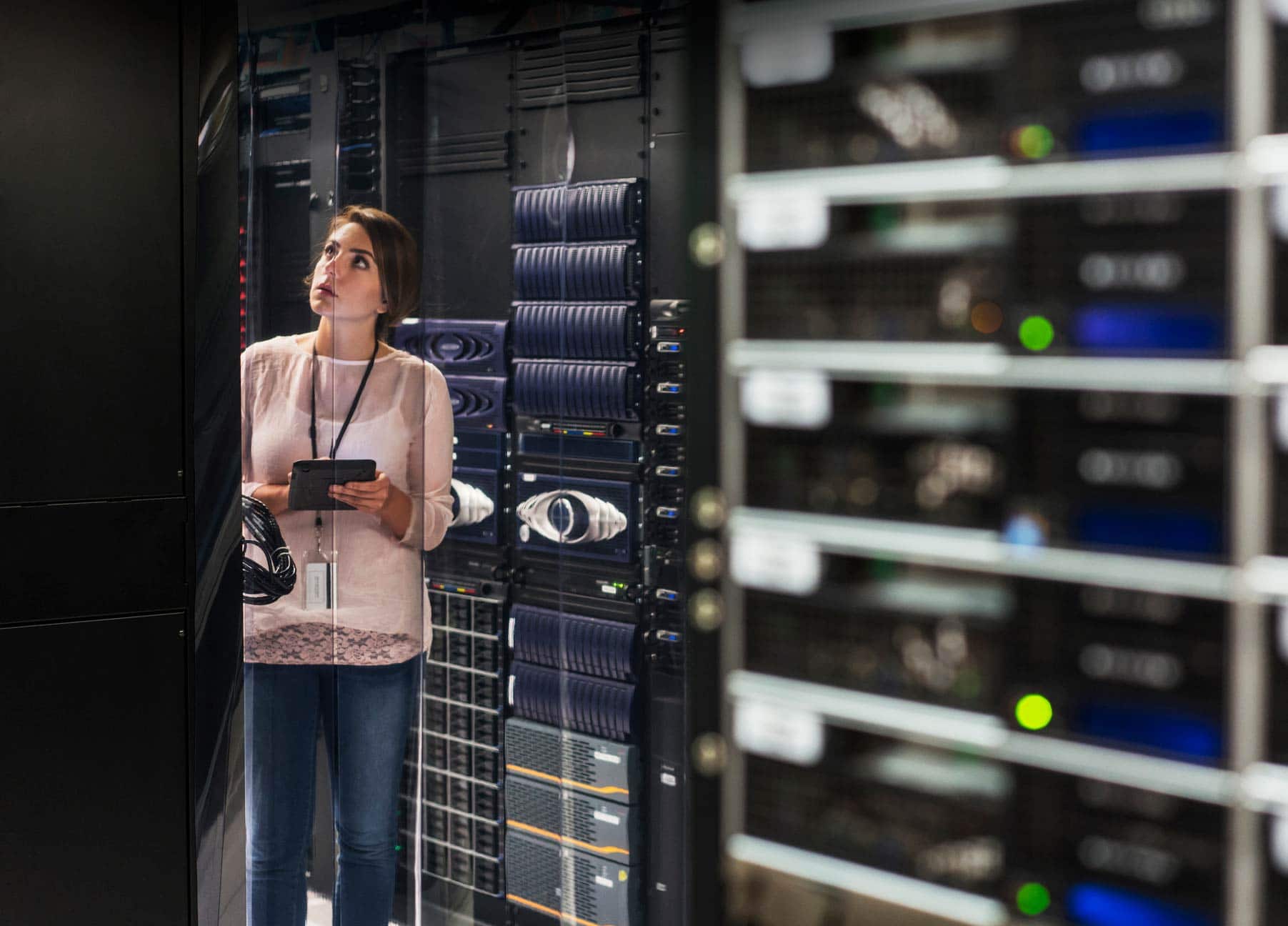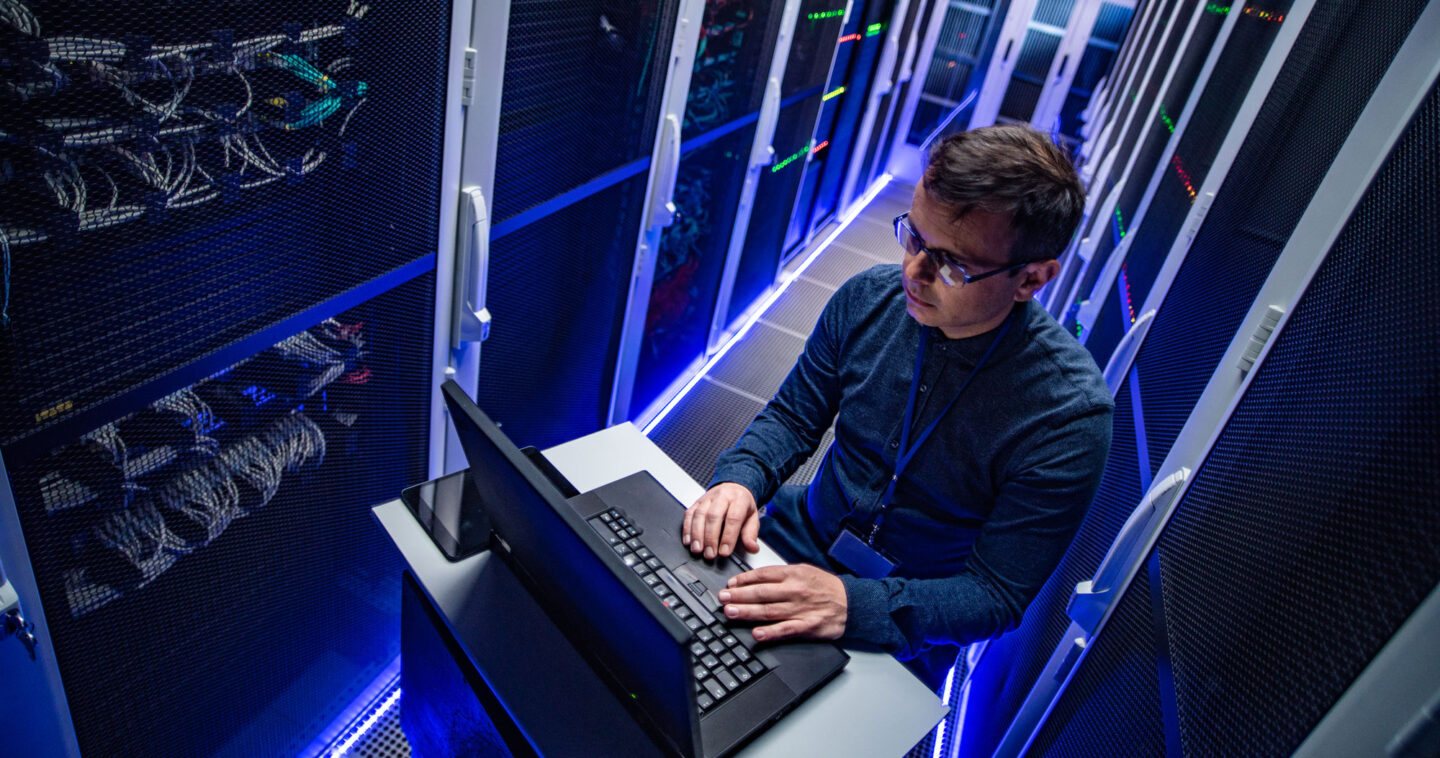Our world is rapidly changing in the way we communicate, educate, travel, socialize, and work. Not surprisingly, the way we use data – and the very nature of data itself – has changed as well. Now, computing power, storage, and networking are widely distributed and, as a result, we have more power at our command. In turn, people’s expectations about computing and data have greatly expanded and the data infrastructure has to evolve to accommodate those needs.
Legacy Data Centers
The traditional data center has gone through several generations of change. From the glass house where everything was centralized to a client server model with compute and storage distributed across locations to bring power to manufacturing and remote offices. Resources were tightly coupled to the line of business applications and user departments often paid to develop and maintain these resources. This naturally resulted in IT resource siloes dedicated to the targeted application. As analytics have become more common, these IT resources are improving operations in the business unit to further reduce costs and drive better results, and ultimately creating new uses for existing data inside the silo.
With the expansion of compute/storage/networking resources throughout the organization, including the mass proliferation of smart devices and smart phones, the traditional data center is fundamentally challenged.
Data is now an organizational asset, not just a business unit siloed resource, and improving the sharing and speed of data leads to greater organizational value.
The protocols powering today’s data centers were designed for HDD based storage. There’s nothing bad about that as particularly for data that doesn’t need ultimate performance, HDD-based will continue to be the best way to support less demanding workloads. However, to get greater insight and better economics from performance intensive workloads, data centers will need to optimize their multitasking capabilities and enable more sophisticated queues of work to ensure the highest utilization of expensive resources, as possible.
In essence, this is NVMe.
Meeting Data Demands
Where a traditional data center may have a couple of paths to data, a data center leveraging NVMe can have many lanes of access powered by very fast flash storage that supports a wide variety of applications and needs. The higher throughput and lower latency of flash accelerates data and applications, and typically improves the utilization of IT resources. The result is a new storage fabric that connects and accelerates the lifeblood of the enterprise: data.
Once the data center is able to share more data efficiently, organizations are able to extract insights, through the use of analytic tools, by allowing more iterations in the same amount of time to improve the data analysis.

Moving to an NVMe Powered Data Center
The next generation data center is not going to happen overnight. The implementation of NVMe in data centers will be a progression of related technologies to extract maximum value, while controlling cost and disruption. And, although we think 2019 will be a year when NVMe starts to become a more mainstream consideration, there are a few steps to consider when trying to understand how NVMe will drive greater value for your data:
- Step 1: NVMe Devices or Systems – The first step is using NVMe devices or adopting an NVMe storage system to support the improved latency needs and better handle consolidated workloads by delivering more lanes of access to the data. This provides low latency storage without changing applications or the data infrastructure for low disruption of business operations.
- Step 2: NVMe-oF™ – The next incremental step is to upgrade the networking so that an NVMe over fabric (NVMe-oF) can better connect storage and computing assets. This may impact the existing data infrastructure, but it will yield another jump in connectivity and speed. NVMe-oF can be used to access both flash and hard drive. This is why it’s the next-generation fabric for both big data and fast data needs.
How to Start Your NVMe Journey?
The digital transformation that is remaking economies all over the world is constantly looking for more data. NVMe is a significant enabling technology that accelerates and enables companies to treat data as an asset and derive more value. We’re helping customers start their NVMe journey. Some are at the first step of making small changes, while others are already ready to implement NVMe-based storage now. Wherever you are in your evaluation phase, Western Digital has the resources and products to accelerate your journey into the next generation of data centers.
If you want to learn more about how NVMe will power the next generation data center, please join me at 10am PDT (5pm UTC/GMT) April 3 for a webinar that I will host on the topic. And, if you have questions you would like me to address during the webinar, please feel free to comment below.



